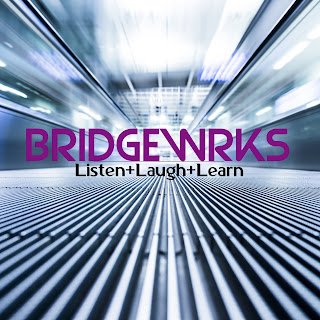Nutcracker
Nutcrackers actually do crack nuts. As early as the 1400s, German lore suggests that
the colorful figurine was made with a large mouth to break nuts. One of the most common nuts associated with
the Christmas season is the walnut. The
outer shell is difficult to crack.
People have been known to use hammers, door jams, freezing them first or
crushing two nuts against one another with bare hands to break the shell. The nutmeat of the walnut is delicious as
well as nutritious. Seven walnuts
provide 94% of our daily requirement of omega-3 fatty acids. Walnuts contain an unusually high level of Vitamin
E which provides protection against cardiovascular disease. They are also rich in antioxidants and
anti-inflammatory products instrumental in decreasing diabetes type 2 and
cancer risk. It’s worth having a
Nutcracker to open a nut loaded with beneficial nutrients conducive to healthy
growth and development.
2 Timothy 3:16-17
16 All Scripture is
given by inspiration of God, and is
profitable for doctrine, for reproof, for correction, for instruction in
righteousness, 17 that the man of God may be complete,
thoroughly equipped for every good work.
Scripture can be a hard nut to crack. We try different Bible versions, different
study Bibles and or attend classes and conferences searching for knowledge and
understanding. There is much ‘meat’
there for our edification, correction and guidance in holy living. To get the benefit, we must do the work. Kenneth Boa in his blog, Studying the Scriptures highlighted below, gives easy to follow tips
on how to maximize scripture study. With
prayer and the inspiration of the Holy Spirit, your spiritual health and
development will grow. It’s worth the
time and effort. Thankfully, a Nutcracker
is not required.
Principles of Bible Study
RULES
1. Treat the Bible as a complete book; it is a
unity in diversity. Try to relate each book you study to the central theme of
Scripture: God's loving plan to redeem and restore imperfect people through the
perfect work of His Son.
2. The Bible is a unified book, but as we study
its pages, we should also remember that it is a progressive revelation. Over
the fifteen or more centuries during which it was written, its portrait of God
and His redemptive program was gradually enriched and clarified. It has been said
that, "The New is in the Old concealed; the Old is in the New
revealed."
3. Do not regard the Bible as a textbook; it is
not merely an object to be observed but an oracle to be obeyed. Approach it
with a proper attitude of reverence, care, and receptivity. It is alive with
the Spirit of God, and it has the power to change the lives of those who
respond to it. It is trustworthy and inexhaustible. There are always fresh
truths within its pages, and the more deeply we mine, the more insight we will
gain. It can transform our thinking and gradually move us from a human to a
divine perspective.
Exercise:
Inspiration has been defined as "God's superintendence of the human
authors so that, using their own individual personalities, they composed and
recorded without error His revelation to man in the words of the original
autographs" (Charles C. Ryrie). Read the following passages and briefly
describe how each aids your understanding of inspiration:Jeremiah 30:2; Matthew 5:17-18; 15:4; John 10:35; 17:17; Acts 28:25; 2 Timothy 3:16-17; 1 Peter 1:10-12; 2 Peter 1:20-21; 3:15-16; Revelation 22:19.
4. Let the Bible speak for itself. Scripture is
its own best interpreter and commentator. This means:
a. Interpret unclear passages in the light of
those which are clear. When wrestling with a difficult passage, use cross
references to consult other verses which deal with the same subject in a
simpler way. Then bring the unclear into conformity with the clear.
b. To be truly biblical, a specific doctrine
must incorporate everything the Word has to say about it. We build up our
understanding of theology by comparing Scripture with Scripture.
5. Interpret every passage in light of its
immediate context (preceding and following verses, paragraph, chapter) and
broad context (book, testament, Bible). A verse lifted out of its context can
become a pretext. It is not as easy to twist the meaning of a verse when it is
observed in its setting.
6. Take the text at face value and interpret it
in its plain or literal sense. Do not interpret it in a spiritual, symbolic, or
allegorical way unless the context tells you that parables, symbols, or figures
of speech are being used. A passage normally has only interpretation, though it
may have a number of applications.
7. Be sure to consider the cultural and
historical setting. This, along with customs and geography, provides the proper
backdrop to assist you in understanding the portion of Scripture you are
studying. Ask yourself the question, "What did this passage mean to the
people of that time and culture?"
RESEARCH
1. In Bible study as well as prayer, it is
crucial to choose the right time and place so that we can be consistent. This
discipline of consistency is essential to a growing theoretical and practical
knowledge of the Word of God. Listen to this statement by D. L. Moody:
A man stood up in one of our meetings and said
he hoped for enough out of the series of meetings to last him all his life. I
told him he might as well try to eat enough breakfast at one time to last him
his lifetime. This is a mistake that people are making; they are running to
religious meetings and they think that the meetings are going to do the work.
But, if this doesn't bring you into closer contact with the Word of God, the
whole impression will be gone in three months.
2. Don't be haphazard in selecting a passage for
study. Try to be systematic in your choice of topics, chapters, and books so
that your input will come from all parts of Scripture and touch upon every
aspect of your life. Design your study sessions so that you will not sacrifice
quality for quantity by overburdening yourself with unmanageable portions. Work
with sections you can thoroughly digest.
3. Avoid getting bogged down in one translation.
Use a primary version for in-depth study, memorization, and meditation, but
work with others from time to time. Some versions are better for broad reading,
while others are more suited to detailed study.
4. Gather information from the text by
bombarding it with as many questions as you can and doing the necessary
research to answer them. This will force you to delve into the Word instead of
skimming over it.
5. Using the information you have collected, determine
what the author means and try to glean insights. State your conclusions in the
form of principles.
If
you read this in its entirety, you are ready to crack open the scripture.



Comments
Post a Comment